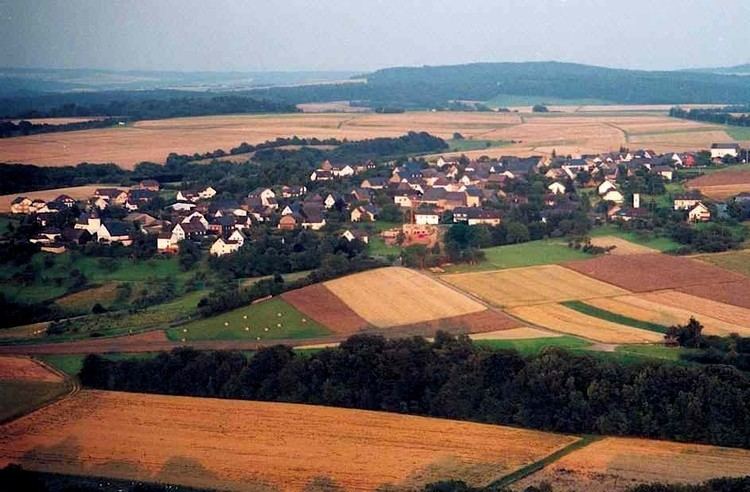Elevation 380 m (1,250 ft) Area 8.76 km² Population 326 (31 Dec 2008) Dialling code 06545 | Time zone CET/CEST (UTC+1/+2) Local time Friday 9:59 AM Postal code 56858 | |
 | ||
Weather 7°C, Wind SW at 11 km/h, 82% Humidity | ||
Liesenich is an Ortsgemeinde – a municipality belonging to a Verbandsgemeinde, a kind of collective municipality – in the Cochem-Zell district in Rhineland-Palatinate, Germany. It belongs to the Verbandsgemeinde of Zell, whose seat is in the municipality of Zell an der Mosel. Liesenich is a state-recognized recreational resort (Erholungsort).
Contents
Map of Liesenich, Germany
Location
The municipality lies in the Hunsrück, and along with Altstrimmig, Forst and Mittelstrimmig is one of the villages that make up the Strimmiger Berg. With a population of roughly 350, Liesenich is considered one of the “somewhat smaller” places in the Strimmiger Berg.
History
Various finds from Roman centres bear witness to early settlement in the area.
The Strimmiger Berg belonged until 1781 to the “three-lord territory”. As in the Beltheim court, the landlordship was shared among the Electorate of Trier, the County of Sponheim and the House of Braunshorn (later Winneburg and Metternich). Beginning in 1794, Liesenich lay under French rule. In 1814 it was assigned to the Kingdom of Prussia at the Congress of Vienna. Since 1946, it has been part of the then newly founded state of Rhineland-Palatinate.
Municipal council
The council is made up of 8 council members, who were elected by majority vote at the municipal election held on 7 June 2009, and the honorary mayor as chairman.
Mayor
Liesenich’s mayor is Wolfgang Gossler, and his deputies are Walter Theisen and Heinz Gründer.
Coat of arms
The German blazon reads: Schild von Rot und Gold schräggeteilt und quergebrochen. Oben ein grüner Pflug, unten in Rot ein siebenspeichiges, silbernes Richtrad.
The municipality’s arms might in English heraldic language be described thus: Per bend fracted per fess in the middle, Or a plough vert and gules a breaking wheel spoked of seven argent.
The Celtic placename Liesenich comes from the original form strymu, a word meaning “hanging” or “sloping”, hence the unusual partition in these arms. The charge in chief, the plough, refers to the way that the village arose, namely from an agricultural homestead. The seven-spoked wheel, the “breaking wheel” (called Richtrad in the German blazon – execution wheel) is Saint Catherine’s attribute, thus representing the municipality’s and the church’s patron saint.
The arms were designed by A. Friderichs of Zell.
Buildings
The following are listed buildings or sites in Rhineland-Palatinate’s Directory of Cultural Monuments:
